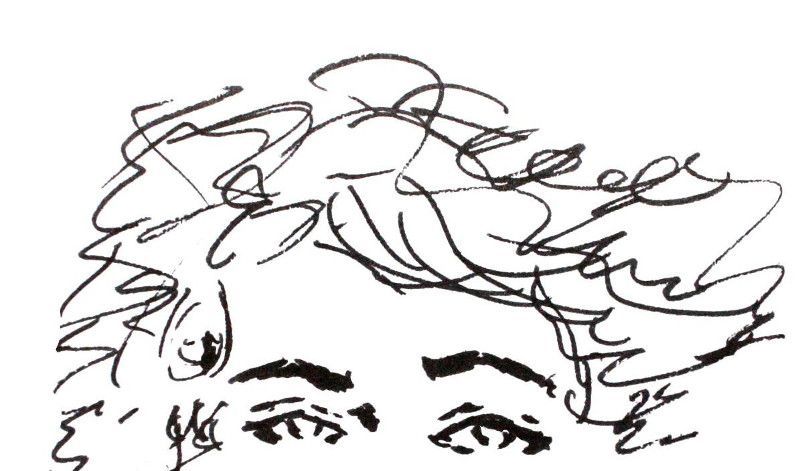How blockchain and cryptos usages are evolving

If you follow me you know how I'm interested in decentralized technologies. Until now, I had some doubts about blockchain and crypto currencies. But recent events changed my mind. I wanted to cover this in a series of tweets but it ended in a 40 tweets thread, so I turned it in a full blog post.
I know what you think, blockchains are boring because most usages are tied to money and investment. Nevertheless, I consider it's good to know what is happening to be aware of its evolution and get new ideas for future problems. To do that, I will describe the main events that occurred recently. Then, I will list the new usages that are emerging. I hope it will give you a better understanding of this ecosystem.
Proof of stake
Until now, each block of the chain needed to be sealed with an hash that was determined through Proof-of Work (PoW). There many computers compete to find a solution to a puzzle. It requires a lot of computation because, they generate random hashes until they find the one that matches the righ formula for the given block.
Because it was very complex to compute these many hashes, it was hard to imitate the transaction list of a blockchain. This is what made the it secured. No bad actor was able fake or modify it.
It's smart and it works but it consumes a lot of resources to build a block. It's an interesting way of setting up a common database but it isn't sustainable and it didn't scale well enough (at least in the current state).
To answer to that problem, a new way of mining was born a few years ago. It's based on the principle of proof of stake. It asks to a single computer (node) to handle the computation of the hash. It guarantees the liability of the result via an economic incentive.
The allocated block size to validate is proportional to the coins hold by the validator node (the stake). Every published block is quickly verified by other nodes. If there is a fraud, the block is rejected, the author node is banned, lose its "stake" and cannot mine anymore. So it makes it less interesting to compromise a block than building blocks.
51% attack still works (when someone owns the majority of the block production it can force modifications), but if someone owns 51% and try to acquire more tokens, it should lead to the deflation of the coin and make the attack worthless in economic terms.
It's still hard to imitate PoS chains due to the amount of validations needed to fake a full blockchain. So, in the end it's much more energy efficient and don't consume more than cloud services. The counterpart is that it tends to be more centralized, since setting up a validator is more complicated than mining from any computer. Moreover, most validations are made by the biggest validator nodes.
I simplified here the principle of proof-of-stake. There are many strategies to achieve it with their own variations. Why I mention it is mainly because it fastened the blockchain adoption during the last year. The principle is not really new neither... What really changed is that it is much more used. Which made "dapps" more accessible. (The dapps are Javascript frontend that interact directly with the chain, this what use the end user). They are faster and transaction fees are lower.
Binance
Binance is the main exchange for trading crypto-currencies. This company is growing very quickly and is very active. It's probably going to be one of the biggest tech company in the world. During the past years they grew exponentially. Aside of their centralized exchanges they built decentralized tools:
- They base all the exchanges on their platform on their own chain named Binance Chain.
- They took advantage of the Cosmos blockchain to build an almost decentralized financial exchange accessible through their site. Transactions happen only on the chain without relying on their APIs.
- They forked the Ethereum blockchain and based it on the proof of stake. From the user point of view, it allows to be totally autonomous. You only need a browser wallet like Metamask to interact with the chain. Their fork is faster and transactions are cheaper. They named it Binance Smart Chain. It works well but all the validators are owned by Binance. Which makes it interesting only on a short term. It helps to battle-harden the main dapps.
These three points show that the technology matured and is now usable at a greater scale.
Defi
With the increase in popularity of Ethereum and the maturity of their smart contracts, the need for a fully decentralized exchange grew. To answer to that problem, in november 2018, Uniswap was born. It's a protocol and a platform to exchange any token available on the Ethereum blockchain directly on the blockchain, without involving a third party (outside the blockchain miners).
With the proof of stake principle, users are rewarded for providing validators with tokens. Uniswap decided to take this principle further. It asks to its users to provide liquidity pairs between tokens by lending an equivalent amount of two different tokens. With that liquidity the protocol can allow someone to "trade" its ETH against BTC or vice-versa. To reward the liquity provider, it collects a fee every time an ETH is trade against a BTC and give it to providers. For example you put 10 ETH and 1 BTC and every day you will collect 0.x% of ETH and BTC as reward.
Fees make a strong incentive to provide tokens to the protocol. This way, they were able to collect a huge quantity of tokens. With these many pairs, the Uniswap users can trade without relying on a centralized exchange. They don't worry too about having enough liquidity to do their token swaps.
But with scaling come problems. Uniswap happens on Ethereum which still relies on Proof of Work. So, when the user count got big, it became slow and the high transaction fee of the underlying blockchain made the adoption difficult.
It gave the opportunity to blockchains based on proof of stake, with better perfomance and lower transaction costs to emerge. The Binance Smart Chain which benefited from the Binance audience and the full compatibility Ethereum found the biggest success. Its main exchange, PancakeSwap, showed quickly more daily transactions than Uniswap. Then some competitors from the Silicon Valley came into play. They have attracted a lof of users too (Solana, Polygon, ...).
It's really a big change. Because with Defi, users are much more active. They can invest in and follow project they are interested in without using a centralized too. The usage field is now much wider and the fun websites make the experience really delighting.
To me, these were the three main events that impacted the most the ecosystem. In the following I'm going to list the main usages now available.
Passive Income (farming)
With the notion of rewarding liquidity providers, a new activity emerged: people now farm their crypto assets to generate more tokens. This way, they grow their capital or simply convert them to dollars. It can be done too with stable tokens (equivalent of dollars). All the earned interests are yielded every second. It allows to build a new revenue stream that rewards you every day.
Gambling
In the Defi ecosystem many dapps propose gambling games like lotteries or prediction bets. I don't like it, but it's worth mentioning it since gambling features are omnipresent. People seem satisfied with the games available. Nevertheless, it has terrible effects on some users and undermine the crypto ecosystem credibility.
Collectibles (NFTs)
Now tokens can be tied to an ID which makes them unique. In that case they are named Non-Fungible Tokens (NFT). This allow to tie a coin to a physical object or a digital creative piece (picture, music, both). For instance, it makes possible to distribute digital cards of sport players, or Pokemon like. You can sell digital arts too or simply use it to buy specific real-life objects.
Streaming, publishing and social networks
Currently, influencers income is tied to the main platforms rewarding system (Youtube, Twitch, Instagram, etc.). To answer to that problem, some blockchains proposed them to be rewarded directly by their audience. With this dapps, every like or view generates tokens for the author. People can send them tokens directly too. There is no more a human third-party involved. If these new social platforms are able to attract major influencers, it will fasten the blockchain adoption.
Ex: Theta, Creary
NB: On a similar way, the Basic Attention Token rewards people for browsing the web through the Brave browser. People are paid for seeing ads.
Fidelity
Sports clubs and touristic applications use coins and NFTs to reward their fans or users. Tokens lead to discount and extra services.
A new business model emerged too: some dapps ask for users to hold their tokens in their wallet. In exchange they give them more features.
Storage and Computing
I didn't dig it much, but some blockchains, gives you CPU power and storage at scale if you are ready to pay with their tokens.
It allows to show a single entry point for accessing a lot of hardware. Ressource providers are rewarded with the blockchain tokens.
Votes
Many projects propose to their token holders to participate to the project governance. Depending on the amount of tokens owned, people can vote between several choices for big decisions. Everything happens publicly, you can see the address tied to a vote. The vote logic could be improved but at least it works. I wish that some blockchains could allow anonymous participation too and fairer vote system (not based on the token amount you own).
Conclusion
A few years ago blockchain technologies were a little bit useless. They were used only in very particular contexts and covered few usages. Today it spreads to a wider range of use cases. It became more user friendly and more fun.
Everything described above, doesn't require to create an account to a website. A simple wallet can interact with any dapps. So blockchains could make the web experience smoother. Even better, it allows communities to decide how the money is shared among users of a platform. Which could lead to something fairer than what we see today with major content platform.
That said, we are still at the beginning of the blockchain technology. As usual with new software, we can expect many progress during the next years. I will keep on my technological watch on this. I'll keep you posted if something big happen!
